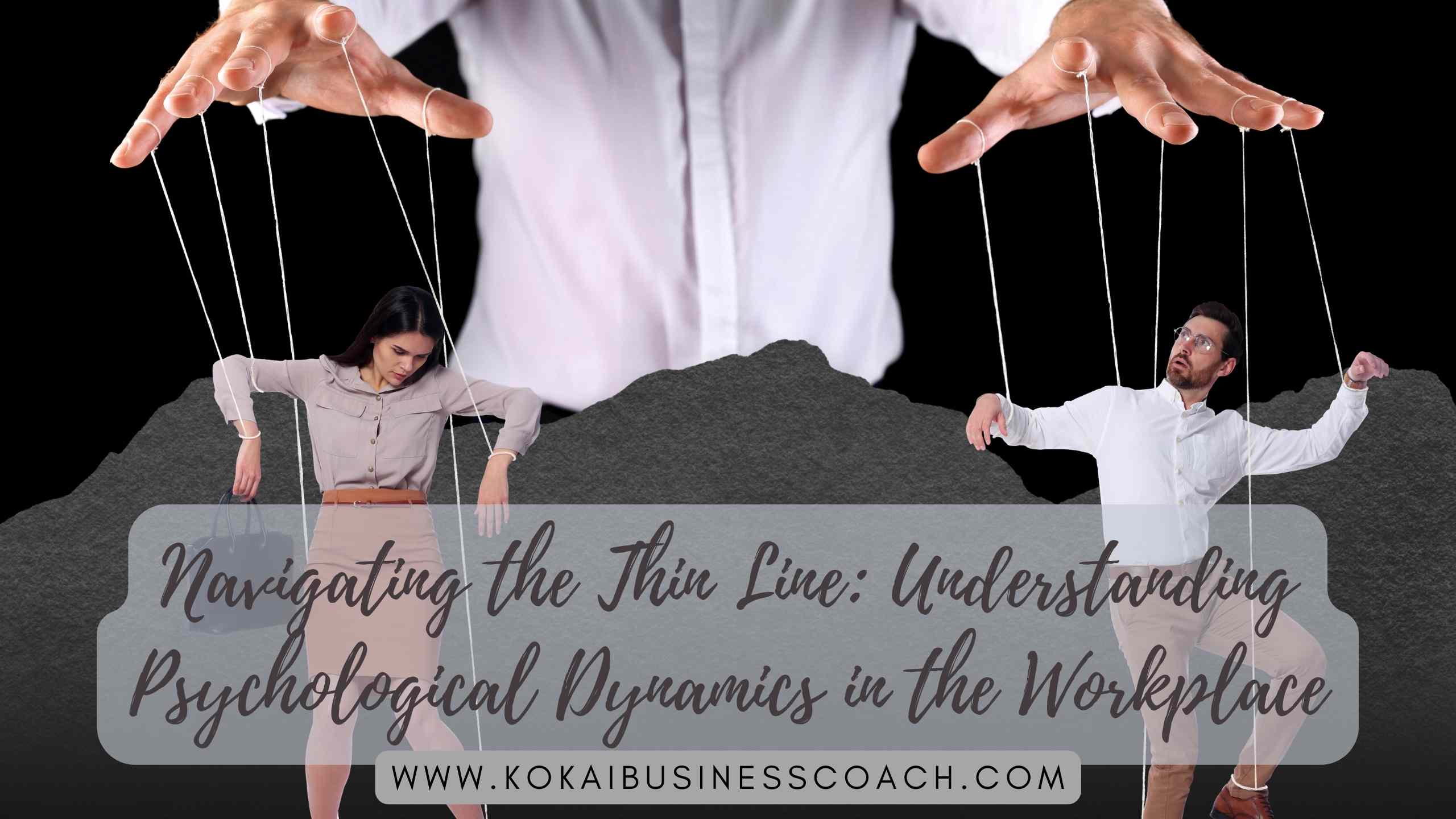Navigating the Thin Line: Understanding Psychological Dynamics in the Workplace

Today we dive deep into the intricacies of achieving professional excellence and personal growth. Today, we’re delving into a topic that can make or break your workplace environment: psychological manipulation in the workplace. Just like a chess game, understanding these dynamics can help you stay ahead in your career journey.
We all know that healthy communication, collaboration, and teamwork are vital for a thriving workplace culture. But, as the business world evolves, so do the strategies used to influence or, in some cases, manipulate individuals for personal gain. That’s why we’re here to equip you with the knowledge to distinguish between positive influence and negative manipulation.
The Power of Influence
Influence, when wielded ethically, can be a powerful tool for driving collaboration and innovation within a team. By tapping into the skills of persuasion, leaders can inspire their colleagues to take ownership of their tasks and contribute their best efforts. Authentic influence is built on trust, transparency, and mutual respect. As a leader, your ability to inspire positive action can create a ripple effect, elevating everyone’s performance.
Understanding Manipulation
On the flip side, manipulation operates in a shadowy realm where personal agendas take precedence over shared goals. This can involve tactics designed to control and deceive, often resulting in negative consequences for the victims. It’s crucial to recognize the signs of manipulation, such as coercion, misinformation, and exploitation. When manipulation is at play, it erodes trust, diminishes morale, and damages the overall fabric of your organization.
Spotting the Difference
So, how do you discern between influence and manipulation? Here are a few pointers:
Intention: Influence seeks to inspire action for the collective good, while manipulation aims to achieve individual gains at the expense of others.
Transparency: Influence relies on open communication, whereas manipulation thrives in secrecy and misinformation.
Empowerment: Influence empowers individuals to make informed decisions, while manipulation takes away autonomy and control.
Long-Term Impact: Influence builds lasting relationships, while manipulation burns bridges and leaves a trail of negativity.
Cultivating a Positive Work Environment
As a business leader, it’s your responsibility to foster a positive work environment that encourages healthy communication, ethical behaviour, and professional growth.
Here’s how:
Lead by Example: Set a high standard of ethical conduct through your own actions and decisions.
Promote Open Dialogue: Encourage open discussions and feedback sessions to address concerns and create a safe space for collaboration.
Provide Growth Opportunities: Invest in training and development programs that empower employees to enhance their skills and knowledge.
Embrace Diversity: Embrace different perspectives and backgrounds, as a diverse workforce can bring innovative solutions to the table.
Final Thoughts
In a world where the boundaries between influence and manipulation can be blurred, it’s essential to remain vigilant and informed. By fostering an atmosphere of trust, respect, and collaboration, you can cultivate a workplace that thrives on positive influence while safeguarding against the pitfalls of manipulation. Remember, a successful business isn’t just about profits and achievements—it’s about nurturing a community of motivated individuals who work together towards a common goal. Keep these insights in mind as you navigate the dynamic landscape of the modern workplace. Until next time, keep growing, keep learning, and keep leading the way!
If you’re interested in enhancing your team’s performance, consider working with a business coach who can provide guidance and support in navigating these dysfunctions, fostering a thriving team culture, and achieving your business objectives.
